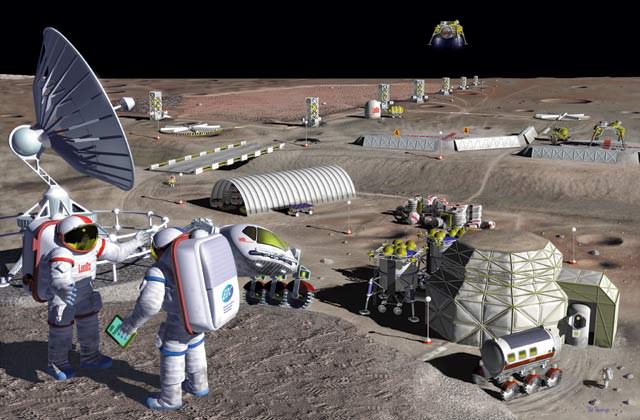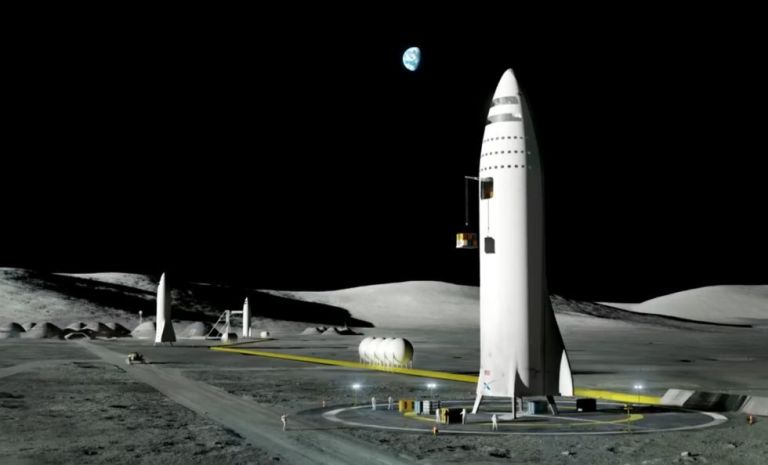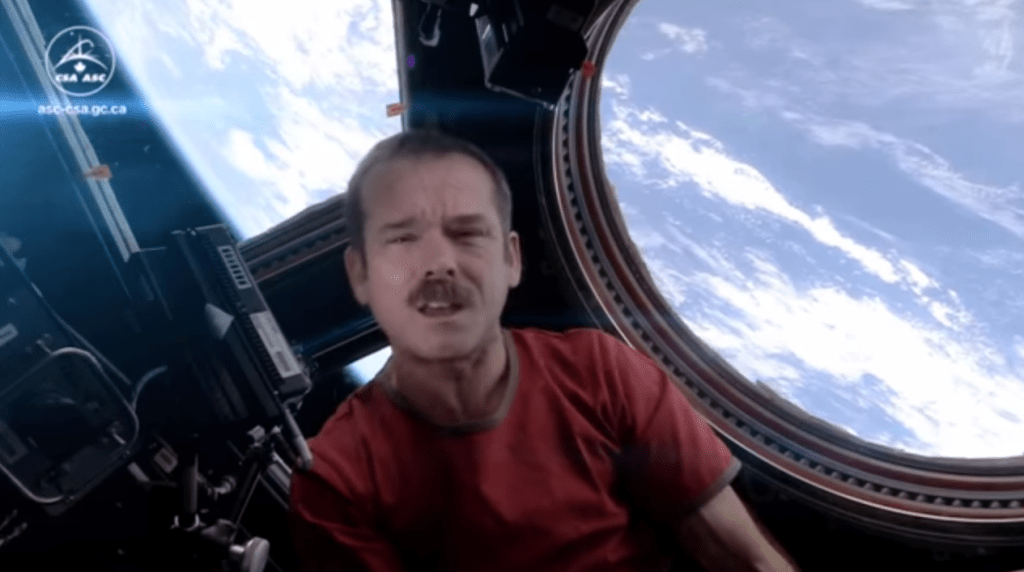With all the plans for sending robotic missions to the Moon in the coming years, and NASA’s plan to send the first astronauts of the post-Apollo Era there, one thing is clear: We are going back to the Moon! But unlike the Apollo Era, we intend to do more than mount “footprints and flags” missions this time. This time, we intend to create the infrastructure that would allow for a long-term, sustainable human presence on the Moon.
This is the vision behind the Open Lunar Foundation, a San Fransisco-based nonprofit organization made up of tech industry executives and engineers (some of whom worked for NASA) that is dedicated to the creation of an international lunar settlement. Intrinsic to this vision is the reliance on private enterprise and the development of open-source technology that would humanity to establish a permanent presence on the Moon.
This plan is in keeping with the spirit of the Outer Space Treaty and the subsequent Moon Treaty. The former, which was signed in 1967 by the Soviet Union, United States, and the United Kingdom, laid out the framework for the peaceful uses of space and still forms the basis for international space law. Since them, the treaty has been ratified by 109 member states.

In addition to barring member states from placing weapons of mass destruction in orbit of Earth orbit, on the Moon or any other celestial body (Article IV), Article I of the treaty clearly states that space exploration should always be peaceful, international and humanitarian in nature:
“The exploration and use of outer space, including the Moon and other celestial bodies, shall be carried out for the benefit and in the interests of all countries, irrespective of their degree of economic or scientific development, and shall be the province of all mankind.
“Outer space, including the moon and other celestial bodies, shall be free for exploration and use by all States without discrimination of any kind, on a basis of equality and in accordance with international law, and there shall be free access to all areas of celestial bodies.”
The subsequent Moon Treaty, which was signed in 1979, sought to take this a step farther. In addition to reiterating the Outer Space Treaty’s commitment to peaceful uses of the Moon and barring the testing or stationing of WMDs on or around it, the Moon Treaty also stipulates that no entity (national or corporate) shall have exclusive ownership rights. This is spelled out in Article XI, where it states:
“Neither the surface nor the subsurface of the moon, nor any part thereof or natural resources in place, shall become property of any State, international intergovernmental or non-governmental organization, national organization or non-governmental entity or of any natural person.”

Unfortunately, only 11 member states have signed on to this treaty, none of which are major powers in space. As a result, there are many unresolved political and legal questions that will undoubtedly become more relevant as lunar settlement edges closer to reality. In addition, the fact that private ownership is not expressly forbidden has led to some scams over the years – like selling land on the Moon!
Open Lunar is one of several organizations that has emerged in recent years that hopes promote lunar colonization in a way that addresses these issues. As Chelsea Robinson, a longstanding nonprofit organizer and the chief of operations and staff for Open Lunar, explained in a recent interview with Bloomberg:
“Our highest ambition is catalyzing and enabling a peaceful and cooperative lunar settlement. At this time when there are so many commercial and government actors advancing their efforts on the moon, we are excited to demonstrate a civic approach to participation.”
So far, the organization has attracted such luminaries as famed Canadian astronaut Chris Hadfield, Planet Labs Inc co-founders Will Marshall and Robbie Schingler, former NASA director Simon “Pete” Worden, and Steve Jurvetson, a venture capitalist who provided the initial investment in Open Lunar an also serves on the boards of SpaceX, Tesla, and other companies.

Each of these individuals brings something unique to the table. This ranges from commanding missions that spent extended periods of time in space (Hadfield); administrative experience and directing NASA projects (Worden); expertise in the development of lunar landers, satellites and surveyor missions (Marshall and Schingler), and tons of business acumen (Jurvetson and others).
Much like several space agencies today, Open Lunar plans to embark upon a program of robotic missions that will eventually lead to a series of crewed missions. These efforts will culminate with the construction of a self-sustaining lunar outpost capable of housing six to ten persons which will be made available for public use.
The organization began as a sort of thought experiment, where a group of people from Silicon Valley were looking at advancements made in recent years thanks to the NewSpace industry. With the dramatic way that launching payloads into space is becoming cheaper, they ventured that it would be just a matter of time before it would be possible to build a small lunar settlement on the cheap (say for about $2 to $3 billion).
Another thing they took into consideration is the way that entrepreneurs like Elon Musk, Jeff Bezos, Yuri Milner, and other billionaires are getting into the space exploration game. A lunar settlement that cost a few billion dollars

In time, Robinson and Jessy Kate Schingler turned this idea into an organization. In addition to being a software engineer who has years of experience working with space policy, Schingler has also studied experimental forms of governance. Robinson assumed the role of chief of operations while Schingler took on the role of director of policy and governance.
Since then, they and the various members who make up their organization have been actively planning what kinds of missions they want to pursue and conducting extensive public relations, educational, and outreach campaigns. As Jurvetson illustrated:
“The picture that emerged out of those meetings was that you could create a permanent, economically self-sustaining presence on the moon that could be done for the single-digit billions. I got excited by that idea and the compelling nature of the people involved.”
Much like several space agencies of the world today, Open Lunar plans to embark upon a program of robotic missions that will eventually lead to a series of crewed missions. These efforts will culminate with OpenLuna building their own launch vehicles and the creation of a self-sustaining lunar outpost capable of housing six to ten persons – which will be made available for public use.

The key to their strategy (as their name would suggest) is to rely on crowdsourcing and open-source technology (like LINUX or Android) to accelerate the process of lunar exploration and settlement. They also plan to share all the data and hardware designs that result from their collaborative work.
If all goes as planned, OpenLuna hopes that their efforts will promote a more harmonious approach to lunar settlement. As Jessy Kate Schingler said:
“Lunar activity is exploding. There are governments and companies intensely focused
on going , but there is no third pillar representing the possibility of doing things differently. If we don’t roll up our sleeves and get involved, then by definition the future of human settlement in space will reflect the status quo of those currently in power. To see things done differently on the moon, we had to start experimenting now.”
Looking to the near future, it is clear that most of our shared space exploration goals are squarely focused on the Moon. Not only do the space agencies of the world want to venture there for the first time (or go back), they are looking to set up shop and stay. Another major change since the Apollo Era is how private industry and the public are involved like never before.
But of course, this raises concerns and (in some cases) genuine fears. For some, the prospect of commercialized space dredges up images of the Wild West, characterized by ruthless megacorporations and people being crushed underfoot. Ensuring that the future of space is as open-sourced as possible could
Further Reading: Bloomberg

